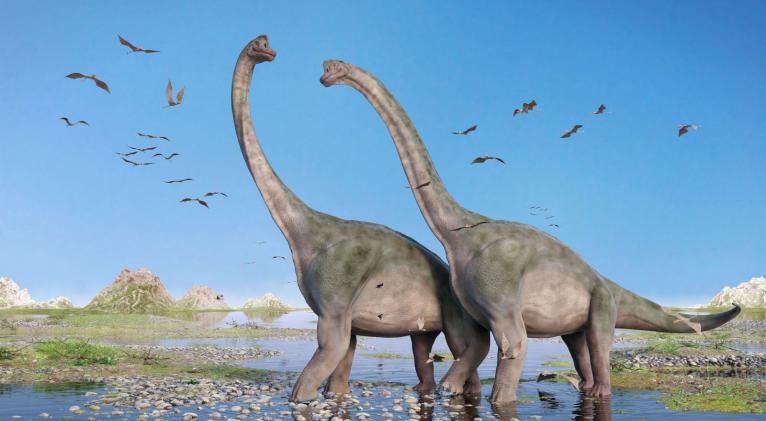
USA, Sep 5.- Collagen, a protein found in bones and connective tissue, has been found in dinosaur fossils up to 195 million years old.
That far exceeds the normal half-life of the peptide bonds that hold proteins together, which is about 500 years.
A new study from MIT (Massachusetts Institute of Technology) offers an explanation for how collagen can survive much longer than expected. The research team discovered that a special interaction at the atomic level defends collagen from attack by water molecules. This barrier prevents water from breaking peptide bonds through a process called hydrolysis.
'We provide evidence that this interaction prevents water from attacking peptide bonds and cleaving them. "This contradicts what happens with a normal peptide bond, which has a half-life of only 500 years," says Ron Raines, professor of Chemistry at MIT and first author of the study, published in ACS Central Science, in a statement.
Collagen is the most abundant protein in animals and is found not only in bones, but also in skin, muscles and ligaments. It is made of long strands of protein that intertwine to form a strong triple helix.
"Collagen is the scaffolding that holds us together," says Raines. 'What makes collagen protein so stable and such a good choice for this scaffold is that, unlike most proteins, it is fibrous.'
In the last decade, paleobiologists have found evidence of preserved collagen in dinosaur fossils, including an 80-million-year-old Tyrannosaurus rex fossil and a sauropodomorph fossil that is nearly 200 million years old.
For the past 25 years, Raines' lab has been studying collagen and how its structure enables its function. In the new study, they revealed why the peptide bonds that hold collagen together are so resistant to breakdown by water.
Peptide bonds form between a carbon atom of an amino acid and a nitrogen atom of the adjacent amino acid. The carbon atom also forms a double bond with an oxygen atom, forming a molecular structure called a carbonyl group. This carbonyl oxygen has a pair of electrons that do not form bonds with any other atom. The researchers discovered that those electrons can be shared with the carbonyl group of a neighboring peptide bond.
Because this pair of electrons inserts itself into those peptide bonds, water molecules also cannot enter the structure to disrupt the bond.
To demonstrate this, Raines and his colleagues created two interconverting collagen mimics: one that normally forms a triple helix, known as trans, and another in which the angles of the peptide bonds are rotated in a different way, known as cis. They discovered that the trans form of collagen did not allow water to attack and hydrolyze the bond. In the cis form, water got in and the bonds broke.
'A peptide bond is cis or trans, and we can change the cis to trans ratio. By doing so, we can mimic the natural state of collagen or create an unprotected peptide bond. And we saw that when it was unprotected, it didn't last long,' says Raines.
'This work builds on a long-term effort by the Raines Group to sort out the role of a fundamental interaction in protein structure that had long been overlooked,' says Paramjit Arora, professor of chemistry at the University of New York, which was not involved in the investigation.
'The paper directly addresses the remarkable finding of intact collagen in the ribs of a 195-million-year-old dinosaur fossil, and shows that the overlap of filled and empty orbitals controls the conformational and hydrolytic stability of collagen.'
This exchange of electrons has also been seen in protein structures known as alpha helices, which are found in many proteins. These helices may also be protected from water, but they are always connected by protein sequences that are more exposed, which are still susceptible to hydrolysis.
'Collagen is made up of a triple helix, from one end to the other,' says Raines. 'There is no weak link, and that's why I think it has survived.'
Previously, some scientists have suggested other explanations for why collagen might be preserved for millions of years, including the possibility that the bones were so dehydrated that water couldn't reach the peptide bonds.
'I can't rule out contributions from other factors, but 200 million years is a long time, and I think it takes something at the molecular level, at the atomic level to explain it,' Raines says. (Text and Photo: Cubasí)